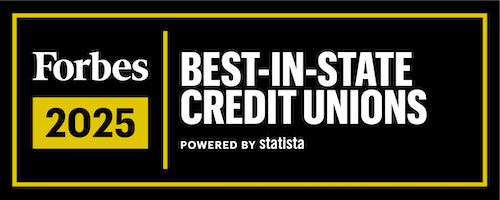Know your business, know your numbers and know your lender
By: Jeff Cascione, Vice President, Business Lending, Navigant Credit Union
Starting a business is incredibly difficult – so is growing a business, expanding a business, moving a business and keeping a business afloat. Long story short: Owning and operating your own business is not an easy task.
So, how do people do it?
Step 1: Have an idea
Whether you’re an aspiring entrepreneur looking to launch your first start-up or a seasoned business owner hoping to expand into a new market – your business plan will always start with a big idea.
Maybe you want to open a new bagel shop in Providence or your manufacturing business grew out of its original space, and you’re looking to bring your revolutionary invention into new markets to increase profit.
Whatever it is, make sure you truly believe in the idea for your business.
Step 2: Start thinking about funding
Existing business owners and start-up entrepreneurs rarely have the cash-on-hand they’ll need to execute their plans. Unless you’re independently wealthy or have third-party investors, you’ll likely need to explore commercial lending options.
From national corporate banks to local community credit unions, there is a wide range of financial institutions that offer commercial lending options. Explore all of your options, and pick the one that best fits with your business goals.
As you consider your funding options, pay close attention to both your business projections and personal finances. Lenders will want to look at your personal financial records, including your credit score and cash flow.
Step 3: Develop a business plan
Before you walk into your lender’s office to present your commercial loan request, you need to develop an in-depth, big-picture business plan.
Lenders will want answers to the following questions:
- Who are you? You’re asking the lender to trust your idea, which means you’re asking the lender to trust YOU. Include your resume in your business plan, and highlight all of the skills, industry experience and expertise you bring to the table.
- What is your business? You know your business better than anyone – and it’s important that your lender sees that you’re passionate about your idea and genuinely believe it will succeed.
- What do you want to do with the loan? Financial institutions take on a great deal of risk when they approve a commercial loan. Your lender will want to know exactly where you’ll be investing every dollar of the loan.
- What do the numbers say? Lenders will want to see carefully calculated, accurate financial projections. At Navigant Credit Union, we typically want to see three years’ worth of financial information. In most cases, we ask for the following information:
- Prior Years: Past two years of financial information, if applicable.
- Year 1: Month-by-month projections
- Year 2: Quarterly projections
- Year 3: Annual projections
The answers to these questions are vital to securing a commercial loan. Take your time and make sure your plan accurately represents your business – and don’t be hesitant to ask for help. There are a number of resources here in Rhode Island that help small business owners through the lending process.
We typically point our members toward Rhode Island SCORE, a volunteer organization consisting of mostly retired business owners and professionals that provides free counseling to local small businesses, and the University of Rhode Island’s Small Business Development Center.
Step 4: Secure your loan, and bring your idea to life
The lending process can be intimidating, and because of that, great ideas are too often scribbled (in?) onto forgotten notebooks and lost in desk drawers. However, hundreds more are funded, executed and (brought to life?) successful.
The business world is built by folks who combine their big ideas with big-picture strategic planning and prudent financial management. If you believe in your business – and you’re willing to put in the work – you’ll see your idea come to life.







